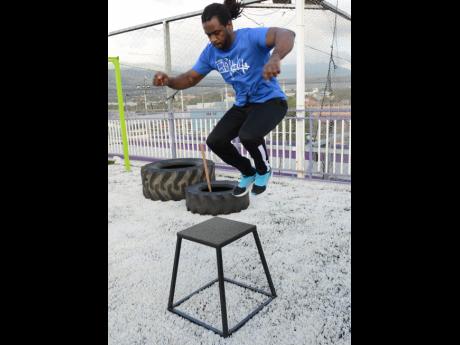Fit 4 Life | Putting it all together: Organising your training [Part I]
When it comes to organising exercises, there are three aspects to tackle: planning your overall programme, planning each workout, and planning each exercise within your workout.
PLANNING YOUR OVERALL PROGRAMME/CYCLE
The first step in making proper use of the information available is to assess your fitness and goals. Once you have tested your strength, endurance, aerobic capacity, flexibility and body composition, you have a foundation upon which to craft realistic goals.
With goals worked out, the all-important game plan – actually, it's more of a tournament plan – must be drafted. As an aside, writing down or otherwise recording well-defined goals is a great way to keep track of them and to stay motivated.
The game plan defines the overall training cycle you will use to reach your goal safely; recording it is a must.
First, record your fitness assessment results and make clear the improvements you are trying to achieve. 'Lose some weight' is not a clear destination; 'Drop 10 pounds of body fat', on the other hand, is. During this early phase, you also need to define the length of your training cycle. So the base of the plan becomes 'Drop 10 pounds of body fat in12 weeks for the Tuff Enuff challenge'.
THE PLAN
With a time limit and an endgame, we can start to piece together a plan. Questions such as 'How often should I workout?' and 'How much time do I need for recovery?' must be settled early.
New trainees should avoid the temptation of trying to fast-track results by working out too often. Training three times a week is enough for newbies. In fact, at three times per week, you can build a great workout-rest ratio of one day on one followed by one day off and two consecutive rest days on weekends.
More experienced persons can opt for more training days, but must still strive for the right balance between work and recovery.
THE DE-LOAD PERIOD
And, speaking of recovery, a de-load week every now and then would work wonders for recovery and progress. After a de-load period, you might find your performance has improved markedly. The simple act of allowing your body some time to recover can work wonders.
De-load time provides the perfect opportunity to break your 12 weeks into smaller mesocycles, which focus on specific development goals. Developing foundational fitness – limit strength, aerobic and anaerobic capacity, flexibility, etc. – is always the dominant goal in the earlier stages. More specific goals are targetted later in the 12 weeks. Building foundational fitness will improve your performance during your workouts, allowing you to do and achieve more in each session.
Splits and holistic training are other important considerations. Training splits allow you to break training down by muscle group or by movement type or even by exercise. This helps to keep workout sessions reasonably short without ignoring the development of any aspect of fitness. Splitting by movement or muscle group are most common and have been shown to be effective. Popular split systems include the upper-lower split, the push-pull (legs) split for beginners.
Holistic training is the principle of trying to develop different aspects of fitness in order to build a complete package.
WHAT TO COVER
Here is what we have identified to cover in our game plan so far:
* 12 weeks to reach the goal
* Three alternating days of workout each week
* A de-load week every three-six weeks
* Use two, six-week mesocycles to work toward specific goals
* Select split systems to use. This can vary throughout the cycle
* Choose various training methods aimed at developing specific aspects of fitness
THE (SAMPLE) GAME PLAN:
The goal: Lose 10 pounds of body fat and boost performance for the 12-week challenge
* A 12-week programme split into three mesocycles – the first three-week cycle will be dedicated to building a foundation; the second will be aimed at improving performance while cutting body fat; the third will focus on specific performance improvements.
* Each mesocycles ends with a de-load week
* Push-pull splits will be utilised to maximise frequency and recovery time.
* Training will include resistance, cardio and flexibility training in the earlier cycles. Later cycles will focus on conditioning specific to the Tuff Enuff Challenge.
What comes next? Planning each workout session.
TIP:
Limit training sessions to 45-80 minute. This should include cardio, resistance, flexibility, conditioning and any other training to be done. Unless you are a professional, avoid training twice a day.
- Marvin Gordon is a fitness coach; email: marvin.gordon@physiqueandfunction.com; yourhealth@gleanerjm.com

